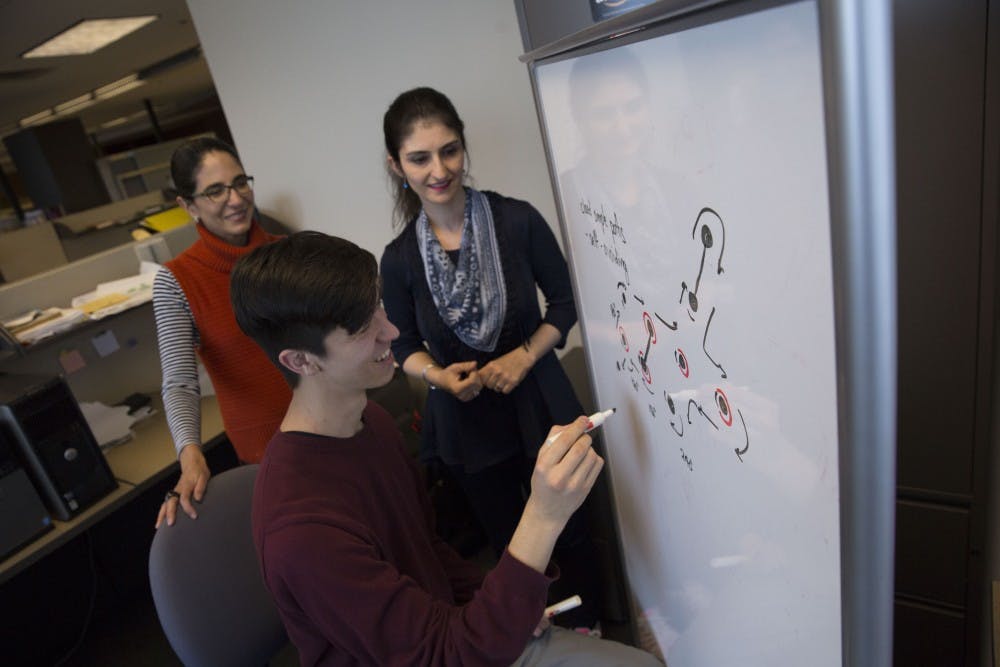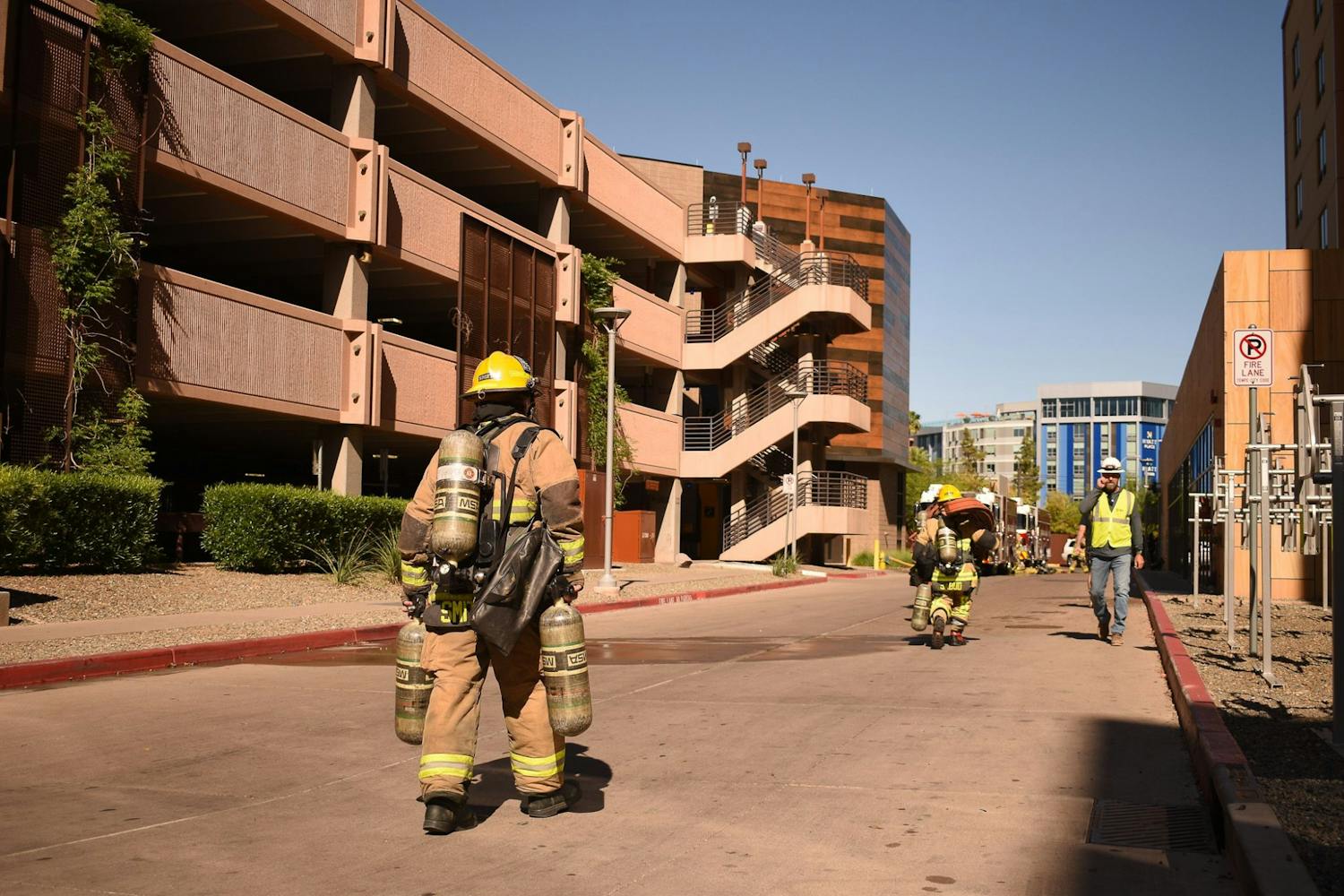An ASU research team is developing organizing particle systems that will open up the possibility of programming materials in the future.
Andrea Richa, a professor of computer science at the School of Computing, Informatics and Decision Systems Engineering, is the lead researcher in the organizing particle systems project at ASU.
“We’re trying to develop an algorithmic foundation for programmable matter,” Richa said. “And what’s programmable matter? The way we envision it is 'What if you had a bunch of spatial computational devices, with very little computational capability by themselves but as a whole could achieve a lot more?'”
The basis of the research is to devise algorithms that would be used to make these primitive computational devices work together and make decisions on their own, Richa said.
The project is currently funded by a grant from the National Science Foundation, Richa said.
For over three years, Richa has worked on this research with a long-time collaborator in Germany, and most recently with the Social Insect Research Group at ASU's School of Life Sciences and professors at Georgia Tech.
“We got some inspiration from some biological systems,” Richa said. “I’m not trying to mimic biological systems directly, but if you think about the way ants and some other collective species behave, it is pretty much like that.”
Richa said that she envisions this research eventually leading to tiny devices that can be swallowed and used to find foreign cells in the human body and even temporarily stopping internal bleeding.
“Developing the robotic devices is also a big challenge,” Richa said.
She said developing the physical devices is outside of her domain, but she plans to collaborate with more researchers in order to see this project out to its full capacity.
Alexandra Porter, an ASU computer science and mathematics senior, has been working on the project for two years.
Porter said that self-organizing particle systems could be made up of almost any group of small individuals working together to achieve a larger goal.
“So what we do is, we design algorithms, we program them on a simulator and then we analyze them and prove how well they work,” Porter said.
She said the algorithms that research group is developing could be used to have individual particles communicate with each other rather than sending information to a central computer.
Joshua Daymude, a first year computer science Ph.D student, is one of the researchers on the organizing particle systems project.
Daymude began the project as an undergraduate and has been working with Richa for three years.
“We come at it more from a theoretical side,” Daymude said. “Some people think that computer science is writing a lot of code or something like that, but what I do is more mathematical.”
Daymude said the work that the lab does is completely abstract.
“We don’t actually build anything physical,” Daymude said. “Most of what we do is really from the perspective of distributed algorithms.”
Daymude said many movies feature swarms of robots that are controlled by a centralized system, but in reality, real systems become weaker as the group being controlled is scaled up.
“So your scheme kind of falls apart there when you have, what we call, a centralized control,” Daymude said. “Our project takes a different perspective, it takes the perspective of decentralized control. That means just taking that middleman out, taking that coordinator out and trying to put the power in each of the individual little robots.”
Daymude said he is excited to see this project come to life and hopes that the research they are doing now will be applied to the real world soon.
“What I really love about this project is the freedom that I am able to think about this stuff and really envision what I want this to look like years from now when we actually have programmable matter," Daymude said.
Reach the reporter at gabbyt98@gmail.com or follow @GabbyTortorich on Twitter.
Like The State Press on Facebook and follow @statepress on Twitter.




